
Creating the perfect startup pitch deck is both an art and a science, as it requires creativity and strategy. And with the countless resources on how to craft a pitch deck floating around, it can be difficult to focus on the model that best showcases your company’s viability. Depending on how far along your company is and who you’re pitching your company to, you’ll have to create numerous pitch decks for your company.
Join the Founder Institute to get even more expert advice on building the perfect pitch deck!
Below are the four main types of pitch deck formats we focus on here at the Founder Institute, clearly stating what you need for each slide, along with an example. (Caution: Do not combine frameworks, as each has a specific purpose.)
Problem-Solution Template
This template is great for startups that have a particularly unique solution to a widespread problem.
1. Cover Slide
-
Title: N/A
-
Name of Company
-
Website
-
One sentence elevator pitch (10 words max)
-
CEO First & Last Name
-
CEO Email (must be the CEO’s direct email address)
-
CEO Phone number
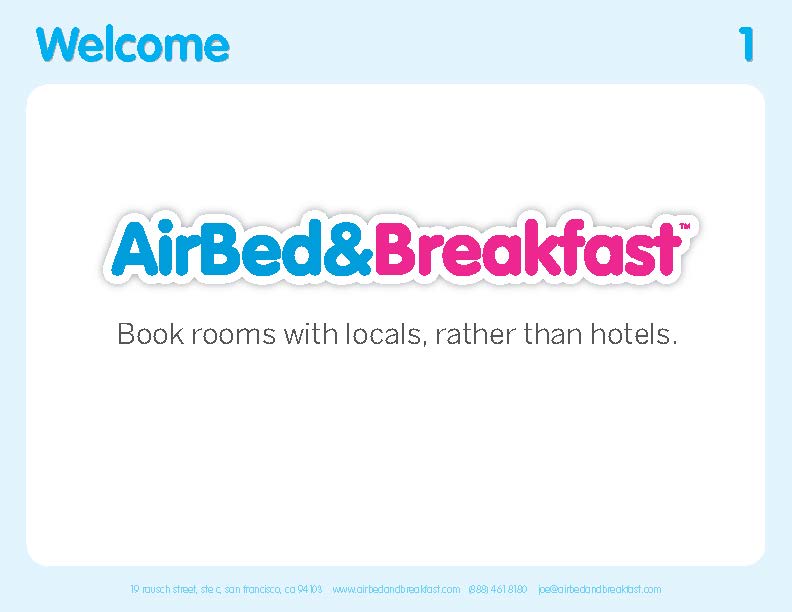
2. Problem
-
Title: Problem
-
One sentence description of the problem (10 words max)
-
3 bullet points max with sub description of the problem(2 words max/bullet), show data to quantify the problem(s)
-
*i.e. Limited Selection, Time Consuming
3. Solution
-
Title: Solution
-
One sentence description of the solution (10 words max)
-
3 bullet points max with sub description of the solution that matches each bullet in the problem slide. (2 words max/bullet). Show data to quantify the solution.
-
*i.e. Problem Bullet: Time Consuming Solution Bullet: Saves Time
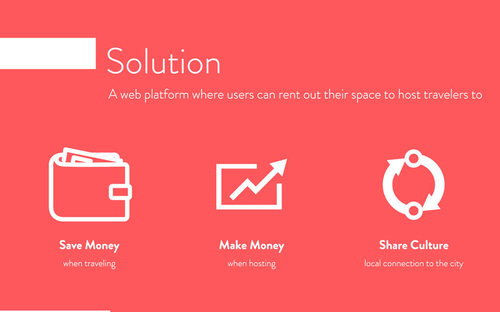
4. Product
-
Title: Product
-
Product Screenshot
-
Multiple Slides (if necessary)
-
*This is the only section in your deck where you can have multiple slides
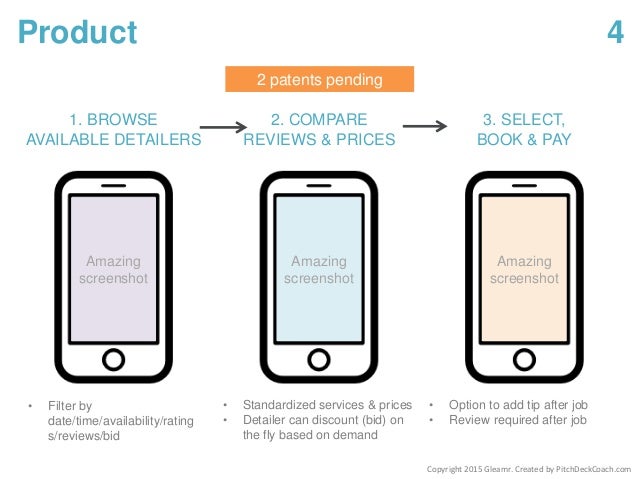
The order of slides 5, 6, 7, 8, 9 below can be rearranged to fit your particular narrative.
5. Traction
-
Title: Traction
-
Must show progress over time

6. Business Model
-
Title: Business Model
-
This is NOT your pricing

7. Market
-
Title: Market
-
Show your specific addressable market
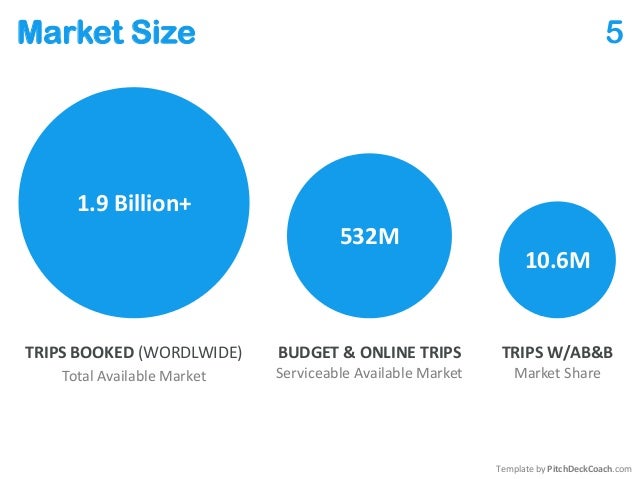
8. Competition
-
Title: Competition
-
Option 1: competitive matrix example
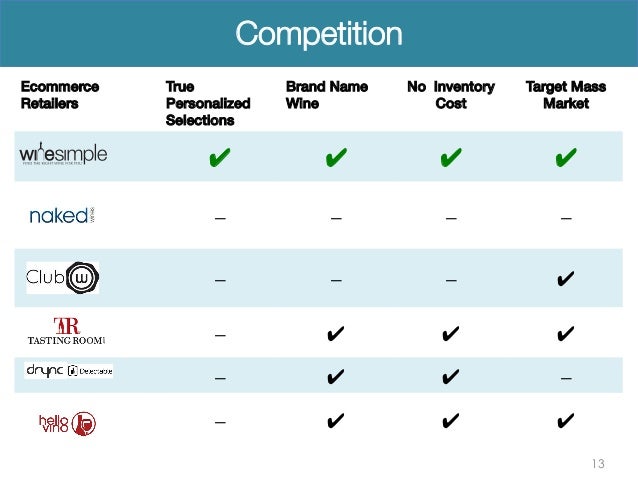
-
Option 2: 2x2 matrix example
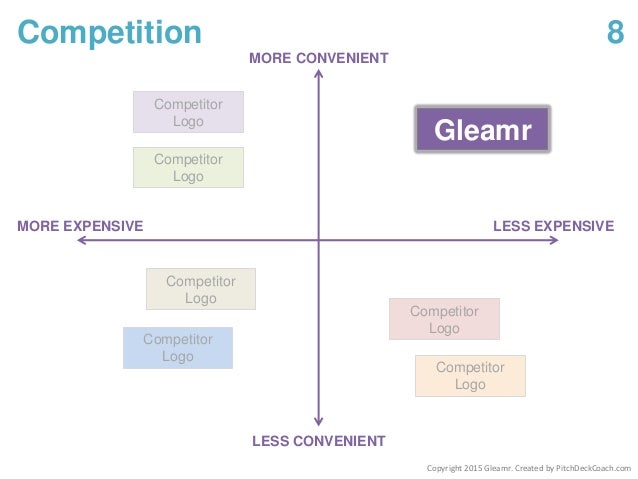
9. Go to Market
-
Title: Go to Market
-
Show how will you get terminal velocity. How are you going to get a lot of customers fast?
-
*DO NOT include Advisors
10. Team
-
Title: Team
-
Photo & accomplishments of each team members
-
*DO NOT include Advisors
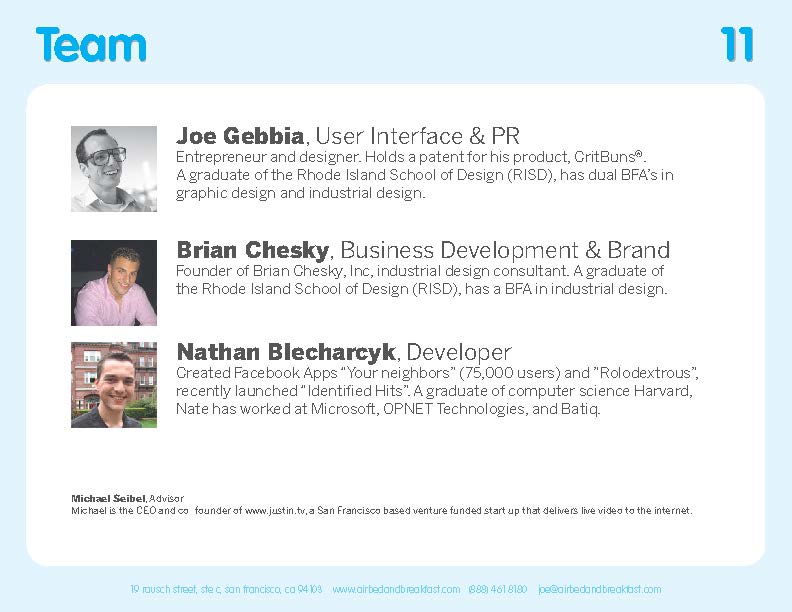
11. Ask
-
Title: Funding
-
Amount you are raising (i.e. $500,000)
-
Business objective(s)
-
*not business objectives: hiring, rent, infrastructure etc...
-
*business objectives: to reach $2mm ARR in 12 months; reach 1mm DAU in 2017
Vision-Opportunity Framework
This template is ideal for startups that are trying to position themselves in a potentially untapped market.
1. Elevator Pitch
-
Title: N/A
-
Name of Company
-
Website
-
One sentence elevator pitch (10 words max)
-
CEO First & Last Name
-
CEO Email (must be the CEO’s direct email address)
-
CEO Phone number

2. Vision
-
Title: Vision
-
One sentence description of the vision (10 words max)

3. Opportunity
-
Title: Opportunity
-
One sentence description of the opportunity (10 words max)
-
Use data to quantify the opportunity

4. Product
-
Title: Product
-
Product Screenshot
-
Multiple Slides (if necessary)
-
*This is the only section in your deck where you can have multiple slides

The order of slides 5, 6, 7, and 8 below can be rearranged to fit your particular narrative.
5. Traction
-
Title: Traction
-
Must show progress over time

6. Business Model
-
Title: Business Model
-
This is NOT your pricing

7. Competition
-
Title: Competition
-
Option 1: competitive matrix example

-
Option 2: 2x2 matrix example

8. Go to Market
-
Title Go To Market
-
Show how will you get terminal velocity. How are you going to get a lot of customers fast?
9. Team
-
Title: Team
-
Photo & accomplishments of each team members
-
*DO NOT include Advisors

10. Ask
-
Title: Funding
-
Amount you are raising (i.e. $500,000)
-
Business objective(s)
-
*not business objectives: hiring, rent, infrastructure etc...
-
*business objectives: to reach $2mm ARR in 12 months; reach 1mm DAU in 2017
Team Framework
If you have a team of noteworthy professionals, be sure to emphasize them with this pitch deck template.
1. Elevator Pitch
-
Title: N/A
-
Name of Company
-
Website
-
One sentence elevator pitch (10 words max)
-
CEO First & Last Name
-
CEO Email (must be the CEO’s direct email address)
-
CEO Phone number

2. Team
-
Title: Team
-
Photo & accomplishments of each team members
-
*DO NOT include Advisors

The subsequent slides should follow either the vision/opportunity or problem/solution framework.
Traction Framework
If your company has made significant traction thus far, then this pitch deck template is for you.
1. Elevator Pitch
-
Title: N/A
-
Name of Company
-
Website
-
One sentence elevator pitch (10 words max)
-
CEO First & Last Name
-
CEO Email (must be the CEO’s direct email address)
-
CEO Phone number

2. Traction
-
Title: Traction
-
Must show progress over time

The subsequent slides should follow either the vision/opportunity or problem/solution framework.
Pitch Deck Do’s and Don’ts
Once you’ve picked the best pitch deck template for your startup, there are a few design elements to keep in mind to ensure that your pitch deck is looking its best when it comes time to present it to investors. Below are some tips to help you make your pitch deck stand out from the rest:
-
Only use images that are relevant to your presentation. Visuals - like charts, graphs, and videos - can be incredibly effective in demonstrating your product’s viability, but don’t put in any visual aids that don’t do anything except just take up valuable space in your deck.
-
Don’t make your pitch deck too long. Focus only on the most important aspects of your company, and save the technical details for follow up questions. Remember, when it comes to presenting your company, it’s best to leave your audience wanting more.
-
Maintain a balance of text and images. Text is great at describing specific details about your product, but images are great at demonstrating how your product works. Ensure that the text and images complement one another for a more streamlined presentation.
-
Don’t use small fonts in your pitch deck. If your audience is constantly squinting to read what your pitch deck says, it will create a bad impression and decrease their engagement.
-
Clearly label each slide of your pitch deck. Give each slide a simple, memorable title that makes it easier for your audience to refer to when they ask follow-up questions.
-
Don’t use too many bullet points. If you pack each slide with nothing but text, your audience will obligated to read everything and distract them from your overall presentation.
-
Tell a story with your pitch deck. Don’t be afraid to inject some emotion into your pitch, as it will engage your audience on a personal level and better convey the need for your product to exist.






